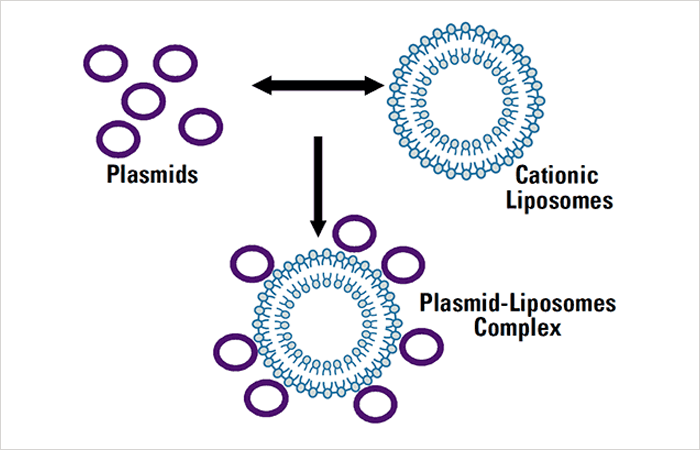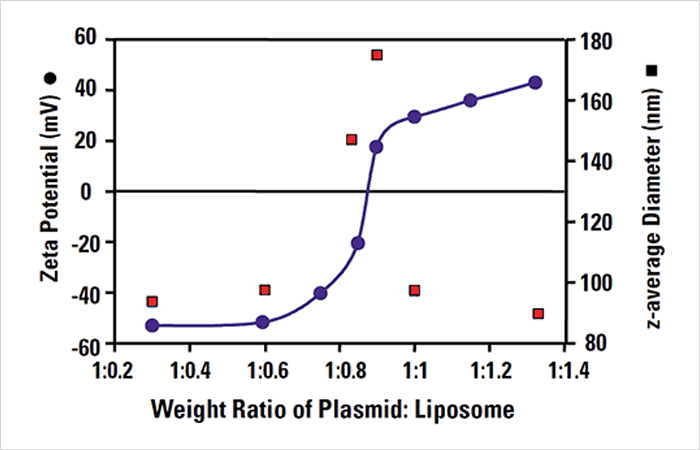Abstract
The use of antibodies, either covalently attached onto the surface of neutral and anionic liposomes or used in a complex, is also being investigated. Zeta potential measurements are being used to develop the most efficient formulations of liposomes, peptides, DNA complexes for transfection studies in vivo and in vitro.
Introduction
Gene therapy is the process by which genetic material is delivered, by means of a vector, to patients for a therapeutic purpose. Vectors are delivery vehicles - usually a virus or a liposome - used to transport the genetic material to target cells in the body.
Both cationic and anionic liposomes are currently being investigated as vectors for gene therapy and their effectiveness in transfection is being studied by research groups and pharmaceutical companies.
Cationic liposomes (positively charged) are complexed with DNA (plasmids) Fig. 1. The liposome:DNA ratio is seen to be essential for optimal transfection.








